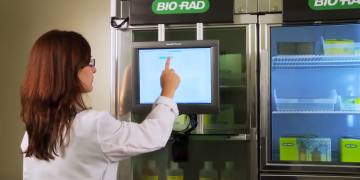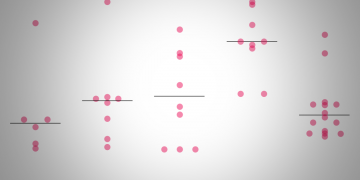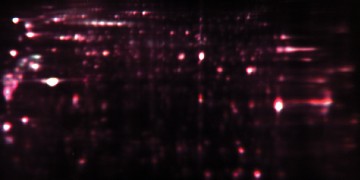
Multiplex Analysis of Inflammatory Markers Using Bio-Plex Pro™ Human Th17 Cytokine Assays
The T-helper cell (Th17) pathway has been implicated in several autoimmune diseases and in cancer. New magnetic bead–based assays have been developed for several biomarkers in this pathway. The performance characteristics of these assays are evaluated from data on intra- and inter-assay precision, standard curve recovery, cross reactivity, and linearity of dilution.

Novel HRM Assays Expedite Drug Resistance Surveillance for Leprosy Research
The significant drop in leprosy worldwide is attributed to the development of antimicrobial multidrug therapy (MDT). Resistance to rifampicin — the backbone of MDT treatment — has appeared. Controlling leprosy transmission requires routine surveillance for mutations in the drug target genes before, during, and after the course of treatment. New high resolution melt (HRM) assays offer leprosy researchers a faster, more economical method to investigate resistance targets.

Campus Source Reduction Programs Bolster Environmental Savings: Sustainability Part Three
Practicing source reduction — simply creating less waste — helps industries decrease raw material use. Despite improvements in global recycling since the first Earth Day on April 22, 1970, the amount of generated waste has increased substantially. Bio-Rad recognizes that source reduction is essential for conserving natural resources. Highlighted here are several source reduction projects from the Bio-Rad campus in recognition of Earth Day 2012 that complement our mission to provide high-quality products to advance scientific discovery globally.

Green Thinking Sparks New Ideas, Better Programs: Sustainability Part One
Bio-Rad recognizes that reducing shipping associated with consumer products is a direct opportunity to slow greenhouse gas emissions contributing to climate change. Bio-Rad supply centers consolidate shipping and packaging. Small steps collectively lead to big change. This is the first installation in a three-part series on sustainable practices developed on the Bio-Rad campus.

Bio-Plex® System in Korea — Seeking to Improve Outcomes for Cancer Patients
Dr Hunseok Lee has known since childhood that he wanted to grow up to become a scientist. “You get to wear white gowns, look through a microscope at various substances so small they can’t be seen by the naked eye — those things were very attractive to me when I was young,” says Lee. But the realities of putting research into practice and translating ideas into experiments have proven far more strenuous than the young Lee anticipated.

New Multiplex Assays for Th17 Cytokine Research
The Bio-Plex Pro human Th17 cytokine panel is a unique blend of magnetic bead-based multiplex immunoassays for the robust and reproducible measurement of 15+1 soluble proteins involved in the T-helper cell type 17 immune response pathway.

A New Paradigm for Precise Quantitation of RNA
The one-step RT-ddPCR kit for probes creates a new paradigm for the precise quantitation of RNA by combining reverse transcription with Droplet Digital™ PCR (ddPCR™), providing an absolute measure of target RNA molecules with unrivaled precision and sensitivity

Around the World with the ChemiDoc™ MP Imaging System
Bio-Rad has long demonstrated innovation in imaging, with the introduction of the stain-free gel electrophoresis workflow, which was rapidly followed by the launch of the Gel Doc™ EZ imager. Now, this progression continues with the release of the ChemiDoc™ MP imaging system.

Transitioning from Chemiluminescent to Multiplex Fluorescent Blotting: Things to Consider
Today many researchers are considering changing their western blot detection method from chemiluminescence to multiplex fluorescence. There are several drivers behind this trend. Most significantly, fluorescent detection allows users to multiplex their western blots, enabling simultaneous detection of several target proteins at once, reducing or eliminating the need to strip and re-probe. Other benefits of fluorescence include better dynamic range, more quantitative results, and better signal stability over time.

Highly Efficient Lipoparticle Capture and SPR Binding Kinetics of a Membrane Protein Using the ProteOn™ XPR36 Protein Interaction Array System
The genes coding for membrane proteins, such as G-protein coupled receptors (GPCR), ion channels, and other membrane-bound enzymes make up 25–30% of the human genome and membrane proteins are estimated to represent 30–40% of the top drug targets. There is growing research, industrial, and commercial interest in the study of membrane proteins in general, and more specifically in immobilizing membrane proteins to various biosensor surfaces.
